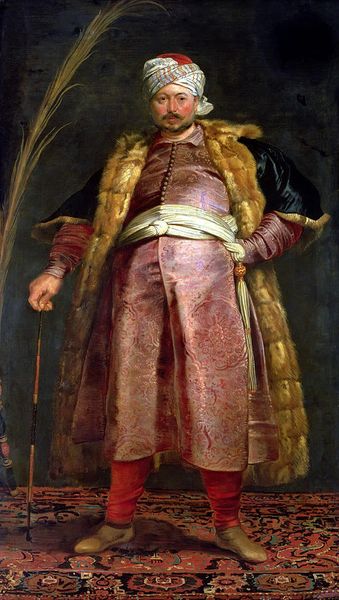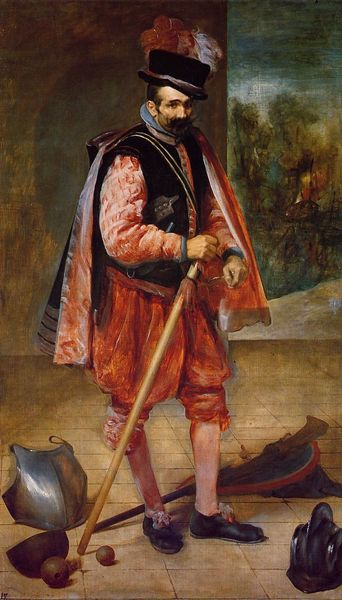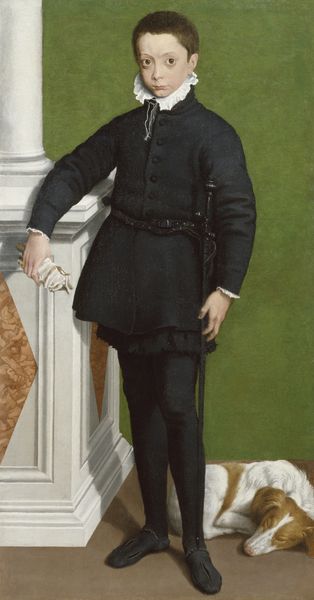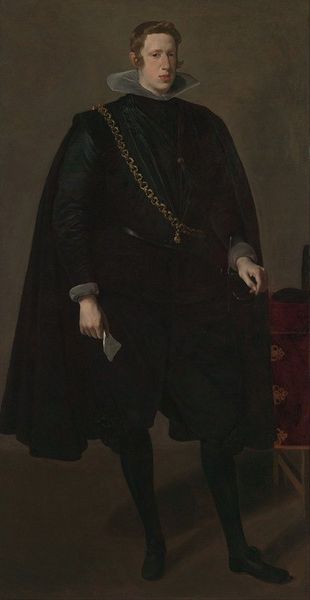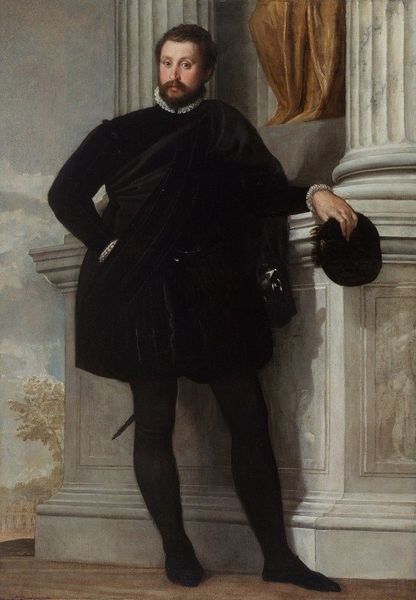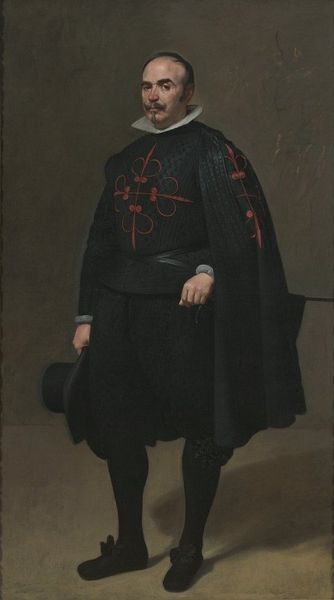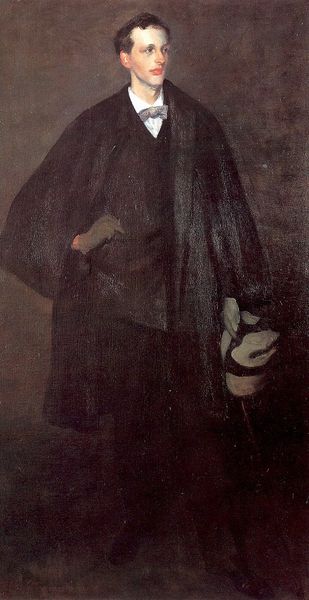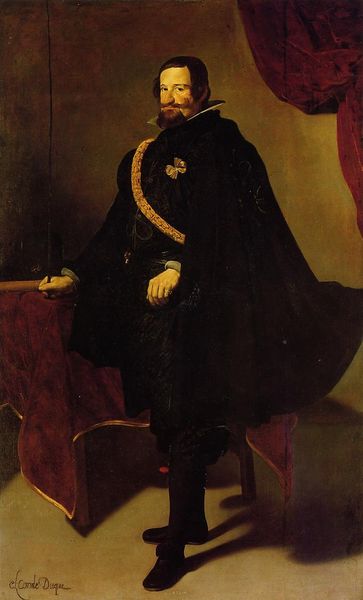
painting, oil-paint
#
portrait
#
baroque
#
portrait
#
painting
#
oil-paint
#
figuration
#
history-painting
Dimensions: 203 x 106 cm
Copyright: Public domain
Curator: So, we are looking at the Portrait of the Count Duke of Olivares, a history painting done in 1624 by Diego Velázquez, and currently held in the collection of the Museo de Arte de Sao Paulo. Editor: My first impression is "serious business". Dark, imposing, the subject practically radiates authority and, well, a slight discomfort in those ridiculously puffed sleeves. Curator: Precisely. Context is everything here. Don Gaspar de Guzmán, Count-Duke of Olivares, was an extremely powerful figure in the court of Philip IV. Velázquez, as the court painter, was tasked with capturing Olivares’s power but also the shifting political landscape. The very dark hues, in that sense, signify a turbulent time in Spanish history, marked by war and internal strife. Editor: Turbulent indeed. You can almost feel the weight of his responsibilities in the painting, all that finery, the key dangling, a symbol of his office, a constant reminder of what he’s carrying on his shoulders. Did he ever get to kick back with a tankard of ale and just… relax? Curator: It’s interesting you point out the key. I believe it is a Chamberlains key that denoted he was the King's Chamberlain and controller of the royal household. It brings up issues of class and access to the royal court. This image, through its stark, direct gaze, is almost an early form of propaganda. It solidified the image of the Count-Duke to the King and to the public as the solid, dependable right-hand man, no matter the historical reality. Editor: It’s so staged! A political Instagram post for the 17th Century! Everything about it seems constructed, from the positioning to the expression. The slight unease lends it some vulnerability, but it doesn’t quite crack the façade. Curator: That’s exactly it. The use of the Baroque style served a specific political purpose. The grandiosity, the intense realism were not just artistic choices, they actively reinforced social hierarchies. The painting presents Olivares as a strong and dependable presence during a tumultuous era, reflecting Spain's imperial ambitions, or at least attempting to put a brave face on the economic hardship and social unrest of the time. Editor: A fascinating piece that straddles propaganda and masterful painting! And you know, the psychological undercurrent of "heavy is the head that wears the crown... or puffy sleeves". I see a man burdened by ambition as much as royal favour. Curator: Yes, and considering the history, examining that constructed persona is all the more telling about how power is curated, displayed and questioned, both then and now. Editor: Agreed. So much for a casual glance! Makes you want to read an entire library about 17th Century Spanish politics!
Comments
No comments
Be the first to comment and join the conversation on the ultimate creative platform.
